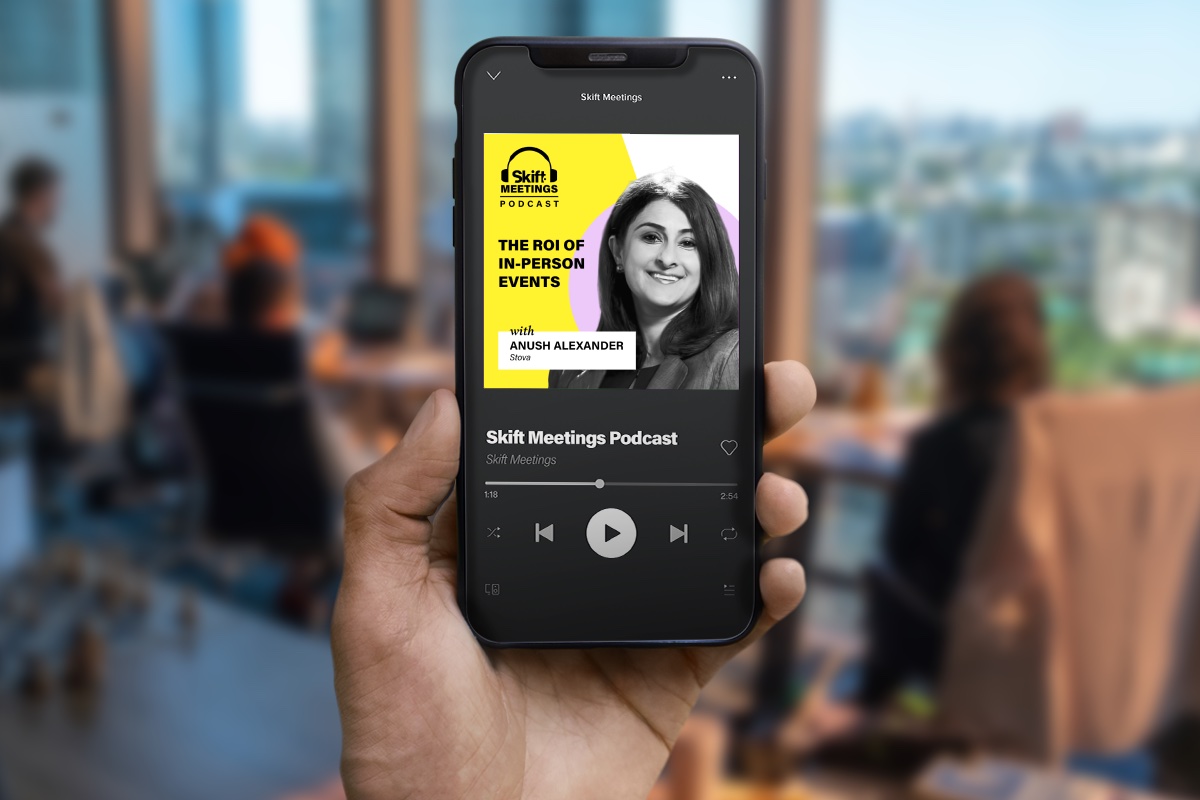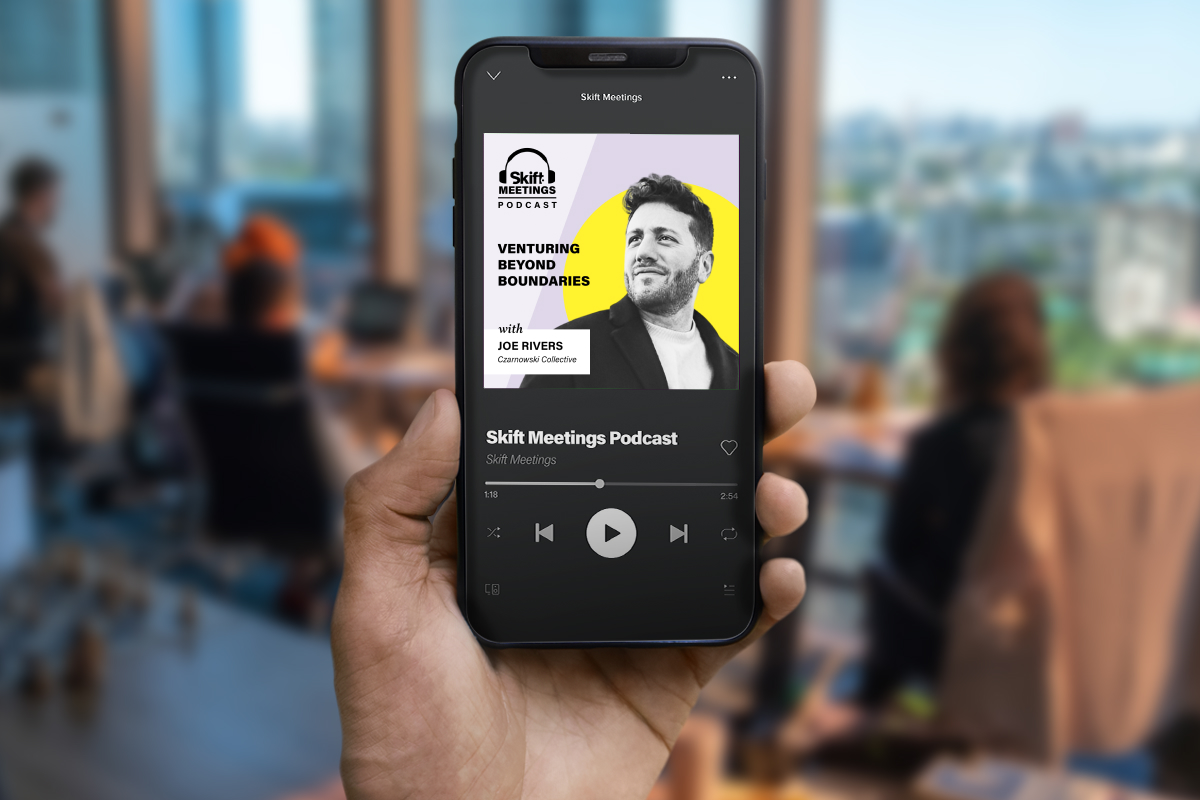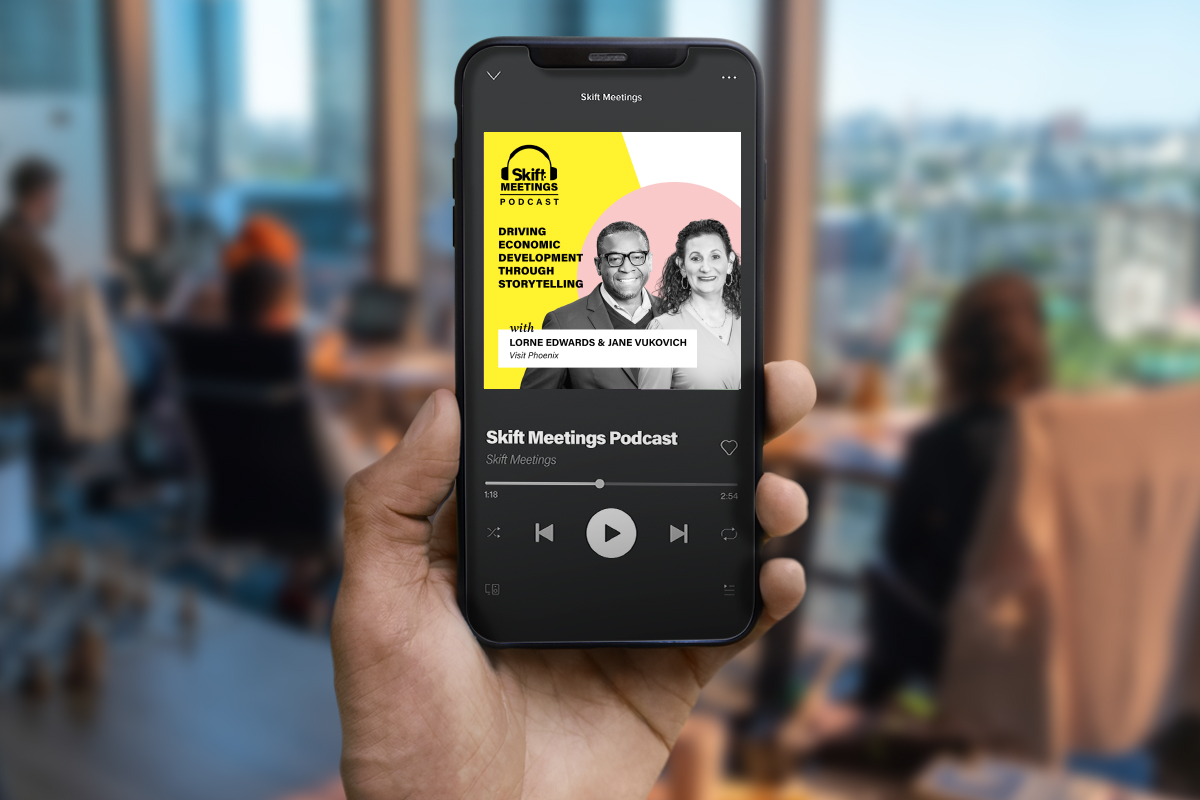Skift Take
Calculating the ROI of in-person events can be hard. Stova's chief marketing officer Anush Alexander recommends looking at events holistically and exploring how they connect.
Anush Alexander, chief marketing officer at Stova, is originally from Iran. She immigrated to the U.S. at a young age with her family and grew up in the Midwest. She graduated from Wichita State before moving to San Francisco. They started their career as a trade promotions coordinator but eventually transitioned into B2B marketing and took several event management and coordinator roles. During the Covid pandemic, she started working heavily with technology. Like so many others, she had to pivot and plan virtual events. She is now working on the vendor side but sees this shift as a natural continuation for someone passionate about ROI, marketing and the event industry.
Subscribe to the Skift Meetings Podcast: Apple Podcasts | Spotify | Overcast | Pocket Casts | Google Podcasts | Amazon | RSS
Stova helps companies connect and expand their communities through the power of events. It provides the technology needed to build, run, and expand events. The merger of three companies (Aventri, MeetingPlay, and Eventcore) provides onsite and virtual experiences and includes components such as venue sourcing, analytics, and other tools. Alexander confesses the merger has had its challenges, but it has put the company in a good position to survive the ongoing ambiguity in the event industry.
The ROI Challenge
As a senior marketer, Alexander understands the daily challenges of calculating a program’s ROI, something that Stova’s clients face regularly. A lot of work and energy is required to obtain tangible results. Comparing ROI 10 years ago to today, there are now more connections between different event and marketing programs, making it more incremental in terms of the overall ROI. For Alexander, event professionals must look at ROI differently now. They should not look at the ROI for a single event as an end in itself. Instead, they should zoom out and consider a wide range of touchpoints driving relationships with prospects and clients.
The Importance of Gathering First-Party Data
With increased regulations around data privacy, consent is more important than ever. Regardless of impending regulations, opting to build custom experiences delivers more reliable and issue-free data. It simply delivers a higher ROI. Still, Alexander alerts that audiences are changing, so smarter communication is essential. But events can be a great way to get specific information.
Much of gathering data is about lead generation, where technology plays a pivotal role through Lead retrieval devices with scanning capabilities. But this is only the start of the process. The next step should be making notes and segmenting out hot leads for the sales team to follow up on or sending other leads to marketing for additional engagement. Quick segmentation is essential to ensure hot leads don’t slip away. Stova’s live access makes it likely that leads will turn into business.
We believe lengthy processes shouldn’t bog down sales teams. Engagement and ongoing content are key for successful lead conversion. As a follow-up, virtual events provide the perfect platform to continue conversations and education, ultimately pushing leads down the funnel.
The ROI of Building a Data Lake
Alexander is keen on the concept of building a data lake, something she recommends every organization do. She thinks of a data lake as a place where data from different sources can be combined and stored, allowing easier access, visualization, and analysis. Once the data lake is in place and collecting data from different sources, it can synthesize data from all events to show how audiences are evolving. Finally, this data can be used to be more prescriptive about what may happen next. This is when it starts to deliver tangible ROI.
Collecting data at in-person events may not be as simple as with virtual events, but there are several methods of collecting accurate and valuable data. RFID badges, session check-ins, beacons/readers, a mobile app, and other sources can all produce information such as dwell times and interest in hotspots. This data can be used to understand engagement and interests in physical settings.
Of course, registration remains a great opportunity to capture quality data, which is often overlooked. To ensure a good user experience, a balance should be struck between collecting data and not making the process too cumbersome. Mobile event apps are also cost-effective for gathering data, particularly when they include great engagement tools such as gamification and audience polls.
Gamification can be used to drive ongoing content after an event. Curated experiences tailored to attendees’ engagement will make it easier to hone in on what works best for future events. However, Alexander reminds us that it’s important to have a goal for gamification and to determine what data is necessary to accomplish this goal before the event. Without this clarity, there is no ROI to collecting data.
AI Won’t Solve Bad Data
Personalization is a buzzword among event technology, particularly when paired with artificial intelligence (AI). It can provide attendees with custom tracks and curated content and connect parties based on meaningful information when done well. Though consumer marketing does this well, B2B has yet to achieve the same level of success. To create truly personalized experiences, event tech needs to collect the right data and be willing to ask the right questions.
To be successful, you need to have a clear understanding of what you are trying to do. The AI algorithms used in the Stova platform can help you connect with your audience based on your goals. However, they rely on getting the right data from the start to establish the connection for the best experience.
Streamlined Tech Stacks Deliver ROI
It’s easy to get overwhelmed with too many options when creating content. You need to make sure your content is connected to your business goals. As a marketer, you want to create meaningful experiences for your audience while still keeping your content focused. Less is more. Have a clear view of what you must accomplish, and you’ll get a better result.
You can only manage what you track, so start small and focus on one task or project at a time. Track the data from each project and use it to grow and improve. Don’t try to do too much at once. Instead, aim for two or three goals with every campaign or event and track the data to get better each time.
When it comes to mastering data management, trial and error is key. Alexander recommends not being afraid to make mistakes. That’s when you learn the most. Pivoting information in different ways to see the results is a great way to gain experience. She admits she’s made plenty of mistakes, but each misstep leads to improvement.
Platforms like Stova deliver all-in-one event solutions. It’s more efficient than connecting through APIs and brings key advantages in data management. One benefit is that marketers can view data from all events across their entire portfolio. This creates a bigger picture so they can measure changes over time and how they evolve with attendees.
Using an all-in-one platform means there are fewer components in the marketing stack, making it easier to capture data. Additionally, onboarding a single system makes it easier to use than needing to learn multiple platforms.
It can be difficult to focus on events holistically and how they connect. Logistically, trying to get one thing to work while preparing for a different event for another client is a big challenge. There is no simple way to overcome that. Technology can help support the process, but it is also a mindset change. Making sure there are enough heads on the job and having a data lake increases the benefits and helps to change the mindset of constantly collecting data.






